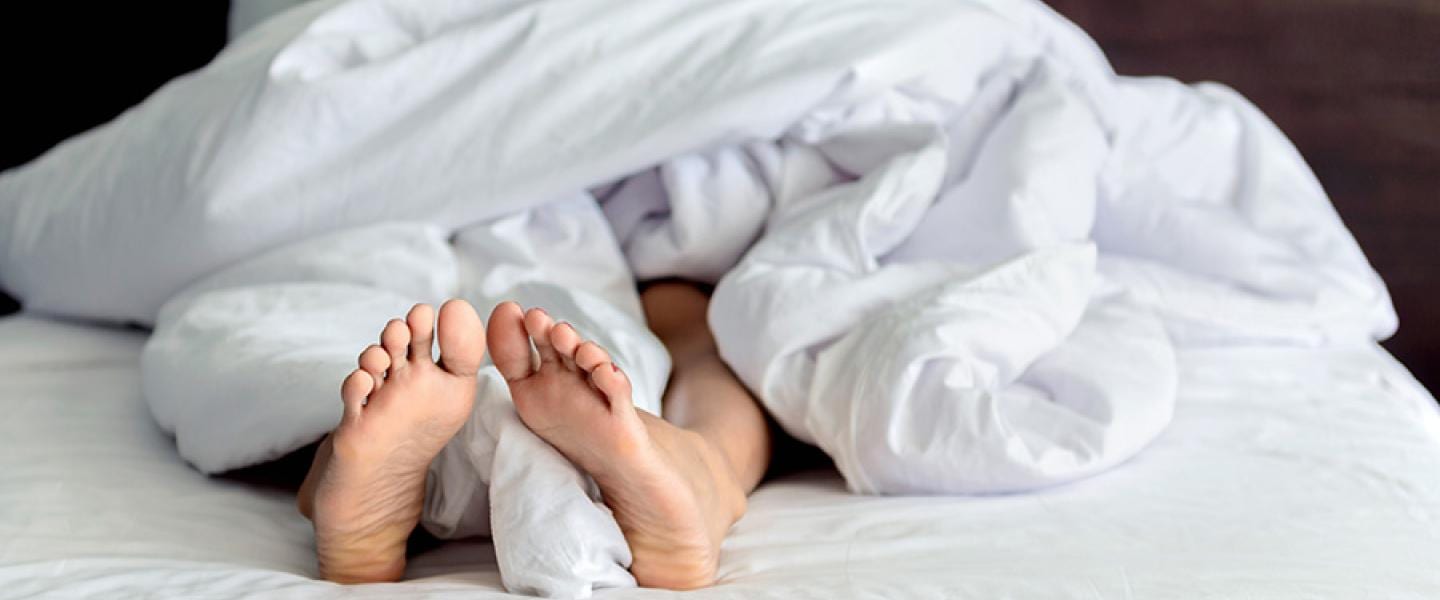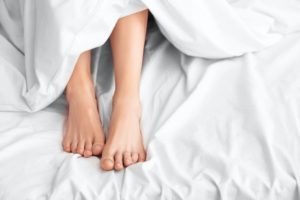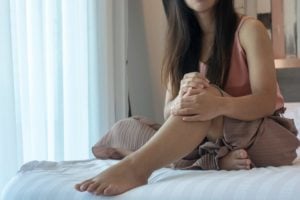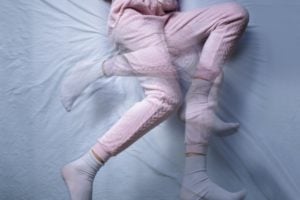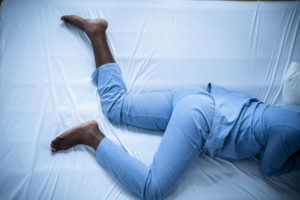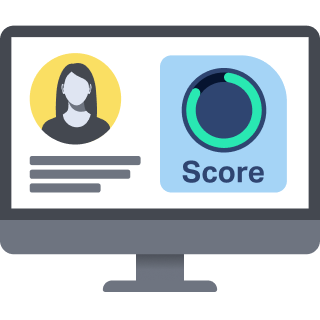Diagnosing Restless Legs Syndrome
Doctors diagnose restless legs syndrome (RLS) by collecting information on a person’s symptoms and performing testing to rule out other conditions. There is not one specific RLS test but rather a set of criteria that an individual must meet in order to be diagnosed with RLS.
Some of the main symptoms of RLS, such as leg discomfort or restlessness at night, can be caused by many factors, including other health conditions, stress, or inactivity. For this reason, a critical part of diagnostic testing for RLS is ruling out other conditions that may be causing a person’s symptoms.
How Is Restless Legs Syndrome Diagnosed?
To be diagnosed with restless legs syndrome, someone must experience a strong urge to move their legs. The urge to move their legs must also be :
- Accompanied by or caused by uncomfortable and unpleasant sensations in the legs
- Worse when sitting or lying down
- Worse at night compared with during the day
- Relieved by moving the legs
In order to diagnose RLS, these symptoms also cannot be explained by another health issue. Some sets of RLS criteria further require that the symptoms must affect a person’s sleep, mental health, or other aspects of overall function.
Diagnosing RLS primarily relies on subjective reporting of symptoms. When you meet with your doctor, they may ask you questions such as:
- Do you have uncomfortable or unpleasant leg sensations when sitting or lying down?
- Do you have a need or urge to move when sitting or lying down?
- Are your symptoms worse when lying down than when you are moving?
- Are your symptoms relieved by moving or walking?
- Are your symptoms worse at night?
A blood test to measure iron levels may be performed when RLS is suspected because iron deficiency is known to increase risk for RLS. However, not everyone with RLS has an iron deficiency, and not everyone who has an iron deficiency develops RLS.
Differential Diagnosis
Differential diagnosis means looking at all of the possible causes of a person’s symptoms and performing testing to rule out irrelevant conditions. Conditions that can share similar symptoms with RLS and that your doctor may need to consider include :
- Leg cramps
- Joint or tendon injury
- Positional discomfort
- Peripheral neuropathy
- Arthritis
- Habitual foot-tapping
- Anxiety
Your doctor will collect information about your family health history, any medications you are taking, and any other symptoms you have to help with the differential diagnosis process. They will also perform a physical exam and, in some cases, may recommend tests to help rule out other conditions.
- Sleep study: A sleep study is not necessary for diagnosing most cases of RLS, but it may be recommended if periodic leg movement disorder (PLMD), sleep apnea, or other sleep disorders are suspected.
- Nerve conduction velocity: This is a test that measures how quickly electric signals move to a nerve and may be used to diagnose or rule out peripheral neuropathy.
It is important to keep in mind that a person can have more than one condition contributing to their symptoms. For example, most people with RLS also have PLMD . Through the process of differential diagnosis, a doctor can build a complete picture of a person’s health concerns and any contributing factors in order to form the most effective treatment plan.
Is There a Test for Restless Leg Syndrome?
There is no specific diagnostic test for restless legs syndrome. If you think you may have RLS, schedule an appointment with your doctor. They will gather information from you and conduct a physical exam. Other tests may be required to rule out medical conditions that present similar symptoms. While you are waiting for your appointment, you can track your RLS symptoms at home using a sleep diary.
Keeping a Sleep Diary for RLS
A sleep diary is a method for tracking your daily habits, nightly sleep quality, and any concerns over time. You will use this information to answer questions the doctor asks you during your appointment.
You could track data such as what time you fell asleep, what time you woke up, and any sleep interruptions. You can also track variables during the day such as naps, exercise, substances like caffeine or alcohol, and your energy levels.
Within a few weeks, you may notice certain trends. For example, your symptoms may worsen when you drink caffeine. Make note of these trends to share with your doctor.
What Does Restless Legs Syndrome Feel Like?
The hallmark sign of restless legs syndrome is an irresistible urge to move the legs that is associated with unpleasant sensations. But the specific feelings can present differently for different people. Words that are often used by people with RLS to describe the feelings they get in their legs include:
- Crawling
- Tingling
- Itching
- Tension
- Pulling
- Cramping
- Creeping
- Pulling
- Electric
Another defining characteristic of RLS is that moving the legs provides relief. This can include walking, rubbing, stretching, or other movements. Because the symptoms primarily occur while resting, they can interfere with sleep . Anyone who is concerned about RLS symptoms should make an appointment to discuss these with a physician. Once an RLS diagnosis is confirmed, there are a variety of treatment options available that can provide relief and improve sleep.
References
5 Sources
-
Ondo, W. (2022, May 18). Clinical features and diagnosis of restless legs syndrome and periodic limb movement disorder in adults. In H.I. Hurtig & A.Y. Avidan (Eds.). UpToDate., Retrieved February 8, 2023, from
https://www.uptodate.com/contents/clinical-features-and-diagnosis-of-restless-legs-syndrome-and-periodic-limb-movement-disorder-in-adults -
Hening, W. A., Allen, R. P., Thanner, S., Washburn, T., Heckler, D., Walters, A. S., & Earley, C. J. (2003). The Johns Hopkins telephone diagnostic interview for the restless legs syndrome: Preliminary investigation for validation in a multi-center patient and control population. Sleep Medicine, 4(2), 137–141.
https://pubmed.ncbi.nlm.nih.gov/14592344/ -
National Institute of Neurological Disorders and Stroke. (2023, February 7). Restless legs syndrome., Retrieved February 8, 2023, from
https://www.ninds.nih.gov/health-information/disorders/restless-legs-syndrome -
Schwab, R. J. (2022, September). Periodic limb movement disorder (PLMD) and restless legs syndrome (RLS). Merck Manual Consumer Version., Retrieved February 8, 2023, from
https://www.merckmanuals.com/home/brain,-spinal-cord,-and-nerve-disorders/sleep-disorders/periodic-limb-movement-disorder-plmd-and-restless-legs-syndrome-rls


